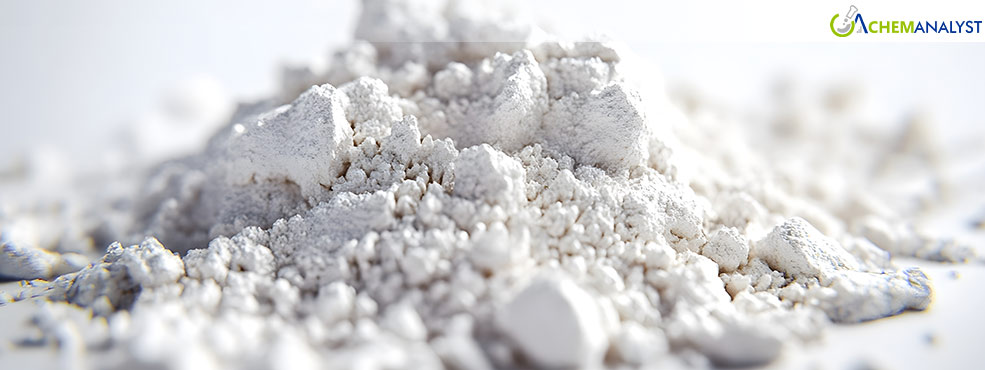Welcome To ChemAnalyst

The Calcium Silicate market recorded an upward trend across both Asia and Europe in April 2025. Prices rose steadily, supported by increased demand from the construction sector and shifting trade dynamics. In both regions, improving infrastructure activity and new project launches led to greater consumption of building materials, including Calcium Silicate. Additionally, global trade uncertainties and freight cost fluctuations played a role in shaping the market.
Key Takeaways:
In Asia, Chinese Calcium Silicate prices went up by 3% in April on a FOB Qingdao basis. This increase was mainly due to steady growth in construction activity. Although the overall non-manufacturing index slightly dropped to 50.4 percent, the construction sector stayed strong at 51.9 percent. Civil engineering projects showed the biggest jump, with their activity index rising sharply up by 6.4 points from March. This shows that infrastructure work picked up speed in April, boosting the need for Calcium Silicate.
China started several big infrastructure and high-tech projects in early 2025, like advanced factories and science parks for AI parts. These projects boosted the economy by increasing both demand and supply. On the demand side, large construction projects raised the need for building materials. On the supply side, strong investment and tax support helped finish more projects. Together, these factors led to higher use of Calcium Silicate and pushed up its prices.
In Europe, Calcium Silicate prices in Germany went up by 2.3% in April. This rise was mainly due to higher import costs and a more positive outlook in the construction industry. After a slow period, the number of building permits in Germany—Europe’s biggest economy—increased, giving construction activity a boost. Confidence in the sector improved, reaching its highest level since May 2023, as companies looked forward to new infrastructure projects.
Market confidence grew stronger as inflation pressures eased—due to a stronger euro, lower oil prices, and a rise in Chinese exports after U.S. tariffs limited trade with Beijing. Building materials giant Geberit saw nearly a 5% increase in Q1 sales and shared a positive outlook for the European construction sector in 2025. Despite global uncertainties, these factors supported higher demand for Calcium Silicate in April, contributing to the price rise.
ChemAnalyst expects Calcium Silicate prices to keep rising in both Asia and Europe. This is because construction and infrastructure work are picking up in both regions. In Asia, especially China, civil and tech projects are driving strong demand for building materials. Government support is also helping these projects move forward smoothly. In Europe, the construction industry is starting to recover, with more building permits and growing business confidence. Even though global trade issues and shipping costs could still cause some uncertainty, the overall demand for Calcium Silicate is expected to stay strong.
We use cookies to deliver the best possible experience on our website. To learn more, visit our Privacy Policy. By continuing to use this site or by closing this box, you consent to our use of cookies. More info.
